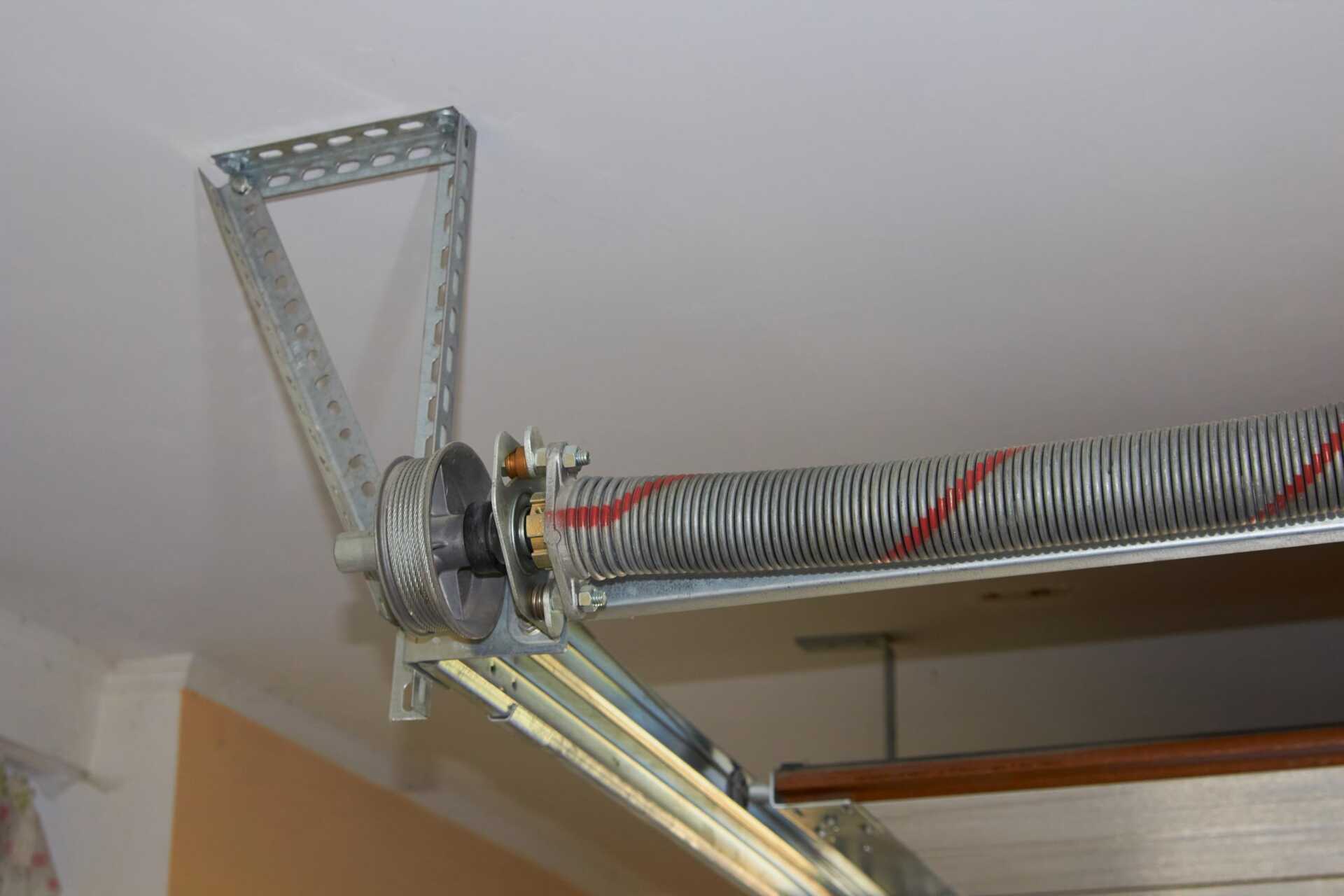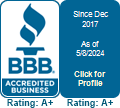
Contents
You might not realize it, but a few simple steps can make a significant difference in prolonging the lifespan of your overhead garage door. By following these top 7 maintenance tips, you can ensure that your door operates smoothly and efficiently. From lubricating moving parts to checking the balance and tightness of hardware, these practices are essential for preventing unexpected issues and costly repairs down the line. Take a moment to reflect on how these maintenance tips could benefit your garage door in the long run.
Key Takeaways
- Regularly lubricate moving parts with silicone-based lubricant.
- Inspect and maintain rollers, tracks, and hardware for wear.
- Test and adjust garage door balance for smooth operation.
- Check weatherstripping and seals for damage.
- Schedule professional maintenance at least once a year.
Regular Lubrication of Moving Parts
Regular lubrication of moving parts is vital for maintaining the functionality and longevity of your overhead garage door. Following proper lubrication techniques and adhering to a regular lubrication frequency ensures smooth operation and prevents premature wear and tear on your garage door components.
To begin, it’s important to use a high-quality silicone-based lubricant specifically designed for garage doors. Avoid using grease or oil-based lubricants as they can attract dirt and debris, leading to clogged tracks and rollers.
Start the lubrication process by applying a small amount of silicone-based lubricant to the hinges, springs, bearings, and rollers of your overhead garage door. Be thorough but cautious not to over-lubricate, as excess lubricant can drip onto the floor and create a mess.
When it comes to lubrication frequency, it’s recommended to lubricate the moving parts of your garage door at least twice a year. However, if you notice any unusual sounds or resistance when operating the door, consider lubricating it more frequently.
Additionally, extreme temperatures or high humidity levels may require more frequent lubrication to maintain peak performance.
Inspection of Rollers and Tracks
For ideal performance and safety of your overhead garage door, conducting regular inspections of the rollers and tracks is key.
Start by examining the rollers to verify they’re in good condition and move smoothly along the tracks. Check for any signs of wear or damage on the rollers, such as cracks, chips, or misalignments. Proper roller alignment is essential for the door to operate smoothly and quietly. If you notice any issues with the rollers, consider replacing them promptly to prevent further damage to the tracks.
Next, focus on the tracks by inspecting them for any debris, dirt, or obstructions that may hinder the door’s movement. Clean the tracks using a soft cloth or brush to remove any buildup of grime or dirt. Confirm the tracks are properly aligned and securely fastened to the walls to prevent any misalignment issues.
Proper track cleaning and maintenance will extend the life of your garage door and ensure its safe operation.
Regularly inspecting the rollers and tracks of your overhead garage door will help you identify any potential issues early on, allowing you to address them before they escalate into costly repairs.
Testing and Adjusting Garage Door Balance
When maintaining your garage door, testing and adjusting its balance is essential.
Understanding the importance of balance testing and learning adjustment techniques will help ensure smooth operation.
Performing DIY balance checks periodically can prevent issues and keep your garage door functioning properly.
Balance Testing Importance
Maintaining the proper balance of your garage door is essential for its smooth operation and longevity. Regular balance testing benefits your door by ensuring that the springs and cables are evenly distributing the weight. This test should be performed at least once every season to catch any issues early on.
To conduct a balance test, start with the door closed and disconnect the automatic opener. Manually lift the door halfway open – it should stay in place. If it falls or rises, there may be a balance issue.
Another method is to lift the door to waist height and let go. A properly balanced door will stay in place; if it moves, adjustments are needed.
Adjustment Techniques Overview
Regularly adjusting the balance of your garage door is vital for its ideal performance and longevity.
Regarding adjustment techniques, focusing on door alignment and spring tension is essential. To ensure proper door alignment, check for any gaps or spaces between the door and the frame. Adjust the tracks if needed to ensure a smooth operation without any rubbing or misalignment issues.
Additionally, pay attention to the spring tension. Proper tension ensures that the door opens and closes smoothly without putting excessive strain on the opener or other components.
When adjusting the spring tension, always follow manufacturer guidelines and consider seeking professional help if you’re unsure about the process. Making small adjustments can make a significant difference in how your garage door functions.
DIY Balance Checks
For an efficient and smoothly functioning garage door, ensuring proper balance is key.
When it comes to DIY balance checks, here are some essential steps to keep your garage door in top condition:
Visual Inspection: Look for any signs of wear or damage on the springs and cables.
Test the Balance: Disconnect the opener and manually lift the door halfway to see if it stays in place.
Adjust Spring Tension: If the door doesn’t stay put, adjust the spring tension accordingly.
Check Balance Indicators: Many modern doors have balance indicators that can help you determine if adjustments are needed.
Seek Professional Help: If you’re unsure about making adjustments, it’s always best to consult a professional to avoid any safety risks.
Regularly testing and adjusting the balance of your garage door can prevent issues and prolong its lifespan, ensuring your door operates smoothly and safely.
Tightening Hardware and Bolts
When it comes to ensuring the longevity and smooth operation of your overhead garage door, one essential aspect that demands attention is tightening hardware and bolts. Over time, hardware fatigue and bolt corrosion can occur due to constant use and exposure to the elements.
To prevent issues like a loose door or excessive vibration, it’s vital to regularly inspect and tighten the hardware on your garage door.
Start by visually examining all the bolts, nuts, and screws on the door and its components, such as hinges, tracks, and rollers. Look for any signs of rust, corrosion, or wear. Use a wrench or screwdriver to tighten any loose hardware that you find.
Pay special attention to the brackets that hold the tracks in place, as they can often come loose over time.
Make sure to check the tension of the springs and cables as well, as these are critical components for the safe operation of your garage door. If you notice any fraying or damage, it’s best to call a professional for repairs.
Checking Weatherstripping and Seals
Inspecting the weatherstripping and seals on your overhead garage door is essential for maintaining its efficiency.
Look out for signs of wear, such as cracks, gaps, or brittleness, as these can compromise the door’s insulation and security.
Regularly checking and replacing damaged weatherstripping and seals can help preserve the longevity and functionality of your garage door.
Seal Inspection Importance
An essential aspect of maintaining your overhead garage door is regularly checking the weatherstripping and seals.
Making sure that your seals are in good condition is critical for protecting your garage from external elements and maintaining energy efficiency.
Here are some key points to take into account:
Seal Types: Understand the different types of seals used on your garage door, such as bottom seals, threshold seals, and weatherstripping.
Seal Longevity: Check the expected lifespan of the seals installed on your garage door to know when replacements might be necessary.
Inspect for Wear: Look for any visible signs of wear, cracking, or gaps in the seals that could compromise their effectiveness.
Clean Regularly: Keep the seals clean from dirt and debris to prevent damage and ensure a proper seal.
Weather Exposure: Reflect on the climate in your area, as extreme weather conditions can accelerate seal deterioration.
Weatherstripping Wear Signs
To ensure the ideal performance of your overhead garage door, it’s essential to be vigilant in identifying signs of wear in weatherstripping.
Weatherstripping plays a vital role in keeping out unwanted elements like dust, debris, and water from entering your garage. Over time, weatherstripping materials such as rubber or vinyl can deteriorate due to exposure to changing weather conditions and general wear and tear.
Inspect the weatherstripping for any cracks, gaps, or brittleness. These signs indicate that the weatherstripping may need replacement to maintain the seal around your garage door.
Proper weatherstripping installation is key to ensuring that your garage remains energy-efficient and protected from external elements. If you notice any wear or damage, consider replacing the weatherstripping promptly to prevent further issues.
Regularly checking and maintaining the weatherstripping will prolong the life of your overhead garage door and preserve its functionality.
Cleaning and Maintaining Garage Door
When maintaining your garage door, verifying it stays clean and well-maintained is vital to its longevity and performance.
To keep your garage door in top shape, follow these cleaning and maintenance tips:
Regular Cleaning: Use a mild detergent and water to clean the exterior of your garage door. Avoid harsh chemicals that can damage the finish.
Inspect and Clear Tracks: Regularly check the tracks for debris or obstructions that can affect the door’s movement. Use a damp cloth to wipe them clean.
Lubricate Moving Parts: Apply a silicone-based lubricant to rollers, hinges, and springs to keep them operating smoothly.
Check Weatherstripping: Inspect the weatherstripping around the door for wear and tear. Replace any damaged weatherstripping to maintain a proper seal.
Test Safety Features: Test the auto-reverse mechanism and sensors to confirm they’re working correctly. This is vital for safety.
Scheduling Professional Maintenance Services
Scheduling professional maintenance services for your overhead garage door is a proactive approach to guaranteeing its ideal functionality and longevity.
Regular maintenance is vital for preventing unexpected breakdowns and costly repairs. When considering the frequency of maintenance, it’s recommended to schedule professional servicing at least once a year. However, if your garage door undergoes heavy daily use, bi-annual maintenance checks might be more suitable to keep it in top condition.
Choosing the right service provider is important for effective maintenance. Look for reputable companies with a track record of quality service and satisfied customers.
Seek out professionals who are experienced in working with overhead garage doors specifically, as they’ll have the expertise needed to identify and address any issues promptly. Additionally, confirm that the service provider offers thorough maintenance packages that include detailed inspections, lubrication of moving parts, alignment checks, and any necessary adjustments.
Review
So, now that you’ve mastered the art of maintaining your overhead garage door, you can sit back and relax, right? Wrong! Remember, just because you’ve taken care of it doesn’t mean it won’t surprise you with unexpected issues. Stay vigilant, schedule professional maintenance, and keep those moving parts oiled up. Your garage door may be silent now, but who knows what mischief it’s planning next. Stay on top of it, my friend.
Recent Posts
Why Follow Best Practices for Overhead Door Installation?
When it comes to overhead door installation, following best practices is essential for ensuring safety
Top Techniques for Overhead Door Installation
When it comes to installing an overhead door, attention to detail is key. You’ll need
Expert Insights on Residential Garage Door Installation
Installing a residential garage door might seem as straightforward as fitting a puzzle piece, but

